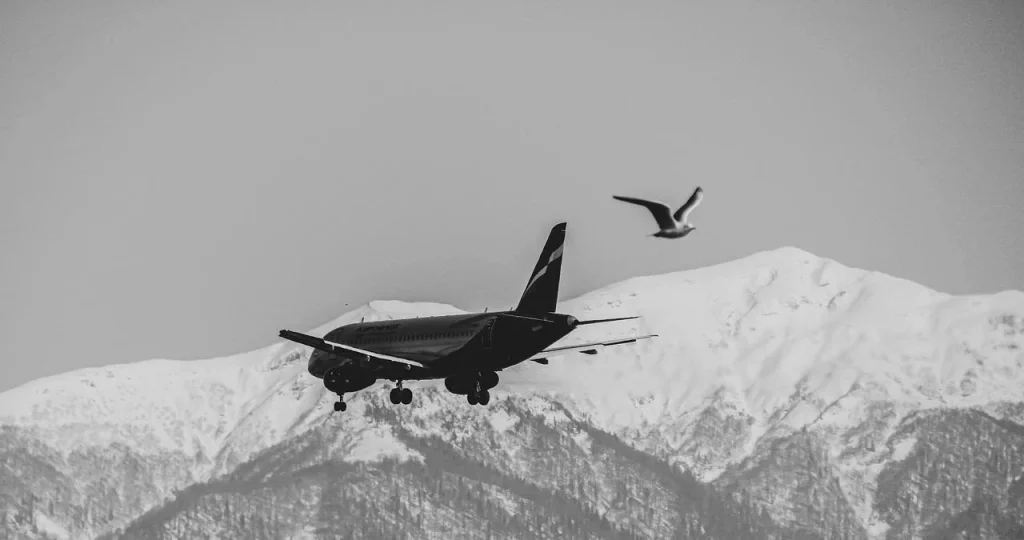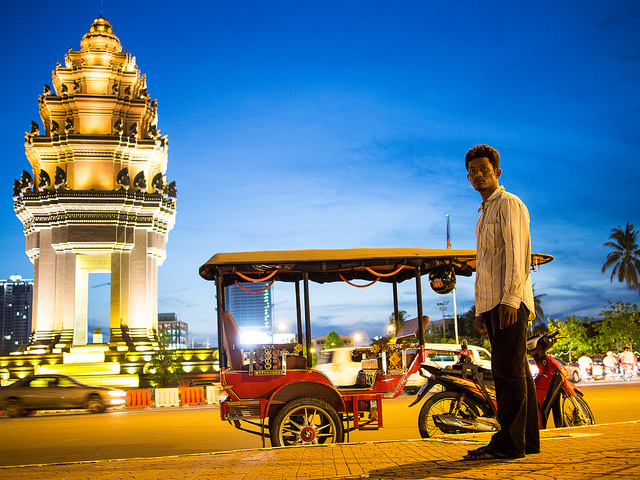Winter vacations sound thrilling, but they may throw undesirable surprises if you are not prepared enough. Traveling in the winter with safety standards and reaching the destinations without any trouble is crucial. As it is the winter season, we can be influenced by snow, ice, sleet, or freezing rain. Following the proper information and facing the winter is an incredible idea.
Whether you plan to take a flight or drive by car, detailed safety tips for winter travel can be very convenient. Those who are going should know the safety guidelines for dealing with the issues in winter.
It is the most incredible time of the year, at least for those who aren’t stuck in a queue at a TSA checkpoint. The holiday travel haste is well underway, and experts expect U.S. airports and roadways to be nearly as busy as they were pre-pandemic.
With the holiday vibe just around the corner, the Transportation Security Administration is anticipating some of the busiest travel days of the season in the coming weeks. Specifically, the TSA expects Dec. 22 and Dec. 23 to be the busiest pre-holiday dates for national and local travel, while Jan. 2, and Jan. 3, are anticipated to be the most active days post-holiday travel.
Skip to section
What to Expect During Winter Travel
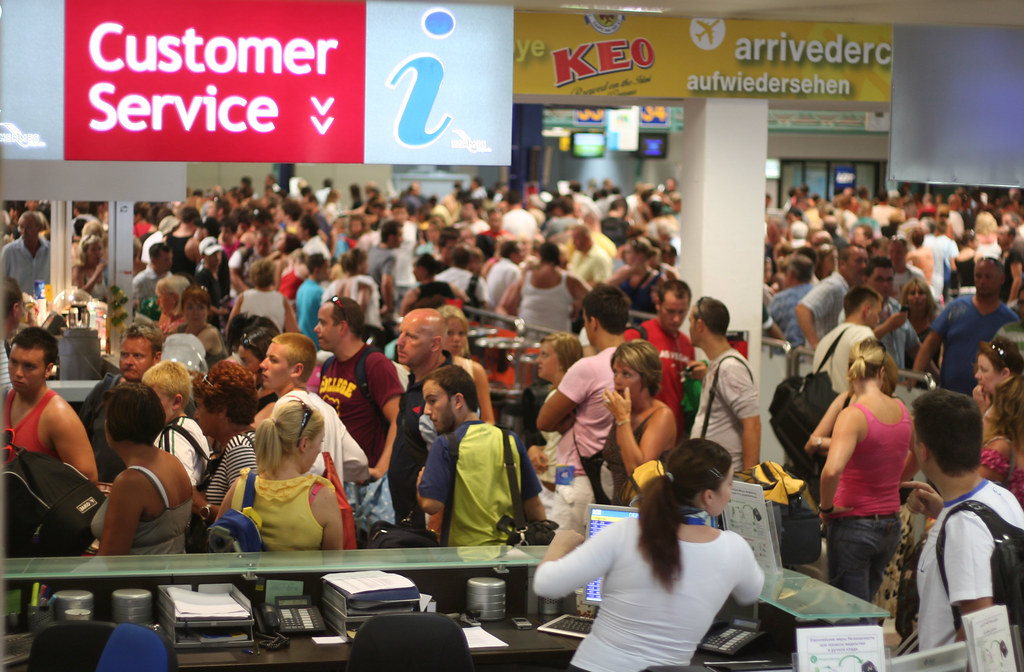
According to AAA, about 109 million travelers are expected to take to the roads and skies for Christmas and New Year’s, representing more than 90% of the 2019 pre-pandemic travel record of 119 million.
The bulk of travelers, 100 million, is projected to drive to their destinations.
But the airports are preparing for crowds as well. According to travel booking app Hopper, Fridays are already estimated to be the third busiest day to fly to your winter getaway, with 2.4 million available seats.
Here’s what to anticipate if you’re traveling this holiday season:
Prices at the pump
According to AAA, with 100 million drivers expected to hit the roads from Dec. 23 to Jan. 2, all eyes are on the prices of gas. While prices are still somewhat high — they can increase as much as 45% — they are dipping slowly.
The typical national price of gasoline has been down 10 cents per gallon each Thanksgiving, according to GasBuddy, and the regular amount of gas on Christmas is projected to decline from today’s $3.32 to $3.25 per gallon.
GasBuddy expects prices at the pump will continue to fall into the new year.
Delays on the road
The roadways will be busy, with prominent metro areas across the country estimated to witness more than double the delays on a normal day, according to transportation analytics company INRIX.
INRIX says drivers in New York City, for instance, are “likely” to encounter more than three times the delays. During holiday travel on the Harbor Freeway in downtown Los Angeles, traffic slows down.
Roads are anticipated to be the most packed on Dec. 23, the morning and evening of Dec. 27, and the afternoon and evening of Jan. 2.
“Early morning trip, in general, has seen a decline, likely due to more individuals working from home,” AAA spokesperson Ellen Edmonds informed ABC News, “and therefore, departing early in the morning is the soundest bet.”
Crowds at the airport
The Transportation Security Administration is set to screen near pre-pandemic travel volumes over the winter breaks, with Dec. 23 and Jan. 3 projected to be the most hectic days.
U.S. airlines are gearing up, with AAA stating they will catch a 184% increase in passengers from last year.
United Airlines anticipates around 8 million individuals to fly on their airline from Dec. 16 to Jan 3, more than double the number of fliers compared to last year and even more people than they saw over Thanksgiving.
They’ve counted more than 200 daily domestic flights to meet the need.
Travelers wear masks as they wait in queue for a TSA security inspection, on Dec. 10, 2021, at Seattle-Tacoma International Airport in Seattle.
Before the pandemic started, Delta Air Lines had been scheduled to fly the most people over the holidays with at least 7.8 million fliers from Dec. 17 to Jan. 3.
“Christmas will be one of the most active times to travel this year,” Hopper economist Adit Damodaran notified ABC News. “I would anticipate it to be bustling. Indeed, if you’re at the airports, it will sense like pre-pandemic traffic levels. We’re predicting about 2.2 million travelers a day going through TSA checkpoints.”
According to Hopper, Atlanta’s Hartsfield-Jackson is projected to be the most bustling airport over the Christmas holiday, with extreme congestion on the morning of Dec. 23. Los Angeles and Denver shadow Atlanta as the three busiest airports for the holiday week.
The Best and Worst Days for Holiday Travel
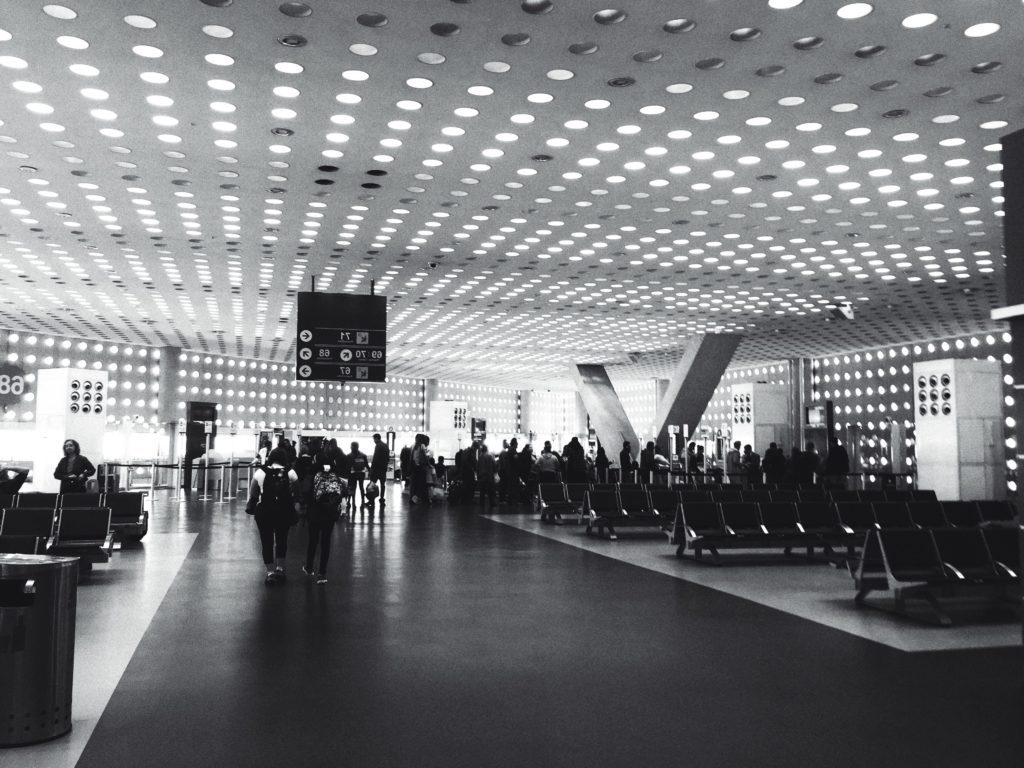
According to Airlines for America, the business group expressing the interests of most U.S. airlines, this holiday travel season stretches over a full 21 days, starting from December 16, 2016, through January 5, 2017. That’s a long time to survive the indignities and discomfort of congested airports and overstuffed planes.
A4A predicts U.S. carriers to haul 45.2 million flyers over the holiday period, a 3.5 percent upsurge. Ever the enterprise cheerleader, A4A reassures travelers that the airlines are up to the job:
As we witnessed over Thanksgiving, U.S. airlines are well-positioned to manage the accumulation of passengers anticipated this holiday season. Airlines’ concerted and well-coordinated measures over Thanksgiving helped guarantee that the traditional holiday rush was as smooth as for fliers, resulting in shorter security wait times and higher on-time performance rates. We foresee witnessing much of the same this winter holiday travel season.
The least busy days, which earn them the best travel days, are December 24, 25, and 31, and January 1. That proves what savvy flyers have long comprehended: Traveling on holiday can be an excellent experience, with notably fewer crowds and a more relaxed and positive ambiance on the ground and in the air.
The traffic flows differ somewhat among airports. The busiest days at five of the biggest airports:
- Atlanta – December 23, 30; January 2, 5
- Chicago O’Hare – December 23, 27, 28, 30
- Los Angeles – December 23; January 2, 3
- Dallas/Ft. Worth – December 22, 29, 30; January 2
- New York/JFK – December 22, 23, 24; January 1, 2
The Busiest Travel Dates for Winter
Consider avoiding travel on these hectic dates if you can help it:
- November 28 – The weekend after Thanksgiving marks when individuals end up Black Friday shopping and have a couple of days off work to fly.
- December 1 – The first day of December is a prevalent air travel date for those who want to extend, even month-long, vacations.
- December 23 – This is the day before Christmas Eve, and people everywhere run to make it to their loved ones before the holiday.
- December 26 – Numerous people need to go back home to work and other obligations as soon as Christmas is over. If you can stay a couple of days before you go home, you’ll surely experience fewer crowds at the airport.
- December 27 – Numerous people know that the airport will be jam-packed on December 26th and wait till the 27th to fly. They don’t think how many people had the same idea. Until after New Year’s Eve, terminals will be congested. If you can, try to avoid air travel until after the 27th.
Now you know which dates you shouldn’t travel. Which of them are likely to provide you with a better travel venture at the airport?
The Best Travel Dates for Winter
Consider scheduling your air travel on these dates to avoid hassle:
- December 20 – Normally, people don’t require more than a couple of days of relaxation at a destination before a holiday. December 20 is just far enough in advance of the main holidays to avoid the largest crowds.
- December 24 – Traditionally, individuals who celebrate want to be with their loved ones on Christmas Eve. They’re usually with families, not at airports. As far as winter travel dates vary, December 24 is one of the lightest.
- December 25 – Like Christmas Eve, this significant holiday is customarily a family day, not one for travels. The 25th might be the quietest day for air travel this winter. If you get innovative with your holiday plans, you’re sure to avoid airport congestion.
- December 31 – Numerous people would rather party to celebrate a new year than consume the rest of their day at the airport hopping. But, if you’re more curious about getting where you need to be while dodging crowds and saving money, New Year’s Eve is a light day to fly.
Mistakes to Evade When You’re Traveling During Winter
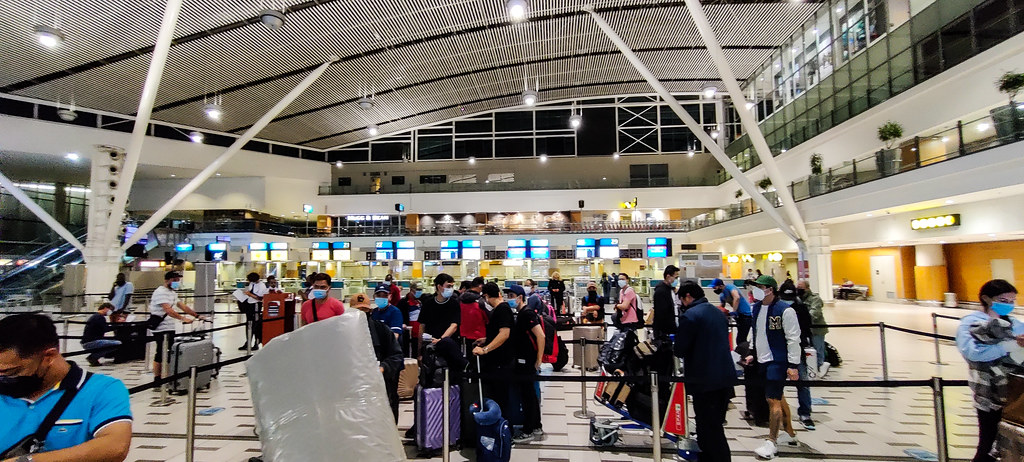
Travelers grieve winter travel each year when the latest snowstorm freezes out their holiday travel plans. So before you take a flight during the winter months, make sure you aren’t making this expensive winter flying mistakes.
Choosing the Last Flight of the Day
As we’ve already cited, winter air travel can be surprising. If you reserve the last flight of the day, you’re also booking the canceled flight because of weather delays, which will leave you out of luck until the morning. Try to book a morning flight whenever possible.
These flights usually are on time as the travel day has just started. Also, if your morning flight does get canceled because of the bad weather, you’ll have a better chance of discovering other cheap domestic flights that same day.
Booking Connecting Flights Via Bad Weather Destinations
Perhaps the worst part of flying during the winter is the unforeseen weather. A snowstorm in Buffalo could impact your flight to Washington, D.C., if you’re assembling connections right in the heart of the storm. If you can during the winter, seek non-stop flights. Acquiring a non-stop flight guarantees that you’ll keep weather delays to a minimum.
If you can’t avoid making a connecting flight, play around with the connecting cities you can select from with your online booking agent. You stand a better chance of dodging delays and cancellations if you can frequently avert hard-hit airports during the winter months.
Failing To Charge All Devices The Night Before Air Travel
The holidays can leave us steering to the airport in a stew. You overlook items you require to pack and even neglect your beloved devices.
A mobile phone that hasn’t been charged before leaving home can get you searching for the last lone plug in the airport. With delays a recurring reality of winter air travel, you don’t want to be attached to the terminal without juice, so charge up your devices before going to the airport.
If you don’t have the time, at least secure a seat on a plane with a power outlet so that you can charge your devices onboard your flight.
Flying on Peak Winter Travel Days
There are specific travel days you’re better off financially and mentally evading during the winter months. Booking a flight near Christmas and New Year’s Eve can be some of the bustling times in an airport.
The day before Thanksgiving is also notoriously congested with travelers trying to get home for turkey tomorrow. You can save yourself the lengthy security lines, possible delays, and your general sanity by evading these busy winter air travel days.
Not Dressing in Layers When You Fly
Dressing for a winter flight can be difficult. It is especially true if you’re leaving a cold-weather area to travel somewhere warm. While you want to be cozy when leaving your home, you also need to be prepared to step out of the plane and be welcomed with warm temperatures. It’s also essential to keep in mind that airports and airplanes can get warm and stuffy. This condition is aggravated if you’re rushing to catch a plane.
So, how do you approach this situation of what to wear when traveling during the winter?
The easy solution is to dress in layers on your travel day. It will let you stay at an ideal temperature as you move between weather extremes. Crucial pieces of clothing for air travel comprise a cardigan or hoodie paired with a tank top or t-shirt.
Carrying along a jacket or other outerwear pieces will also keep valuable space in your luggage. You’ll enjoy the foresight to dress in layers when you step out of that airport at your destination and have what you require to alleviate your thicker layers of clothing or bundle back up clothing to stay warm.
Be sure to give yourself a ton of options.
Not Padding Your Travel Schedule
When traveling during the winter, you may run through a significantly higher risk of uncertainties and other disruptions to your itinerary. The rough weather conditions that permeate this time of year are accountable for higher flight cancellations and delays. To provide yourself with a little more wiggle room, it’s always good to produce some padding into your travel schedule.
If you have a layover, make sure that you accomplish what you can to avoid having to make a tight connection. Even the tiniest delay can throw a twist in your entire travel day. The trickle-down result from just one missed connection can trim a whole day off your trip.
Padding your travel schedule is particularly crucial if you’re traveling through an airport known for delays because of the extreme weather. If you have an option in connecting hubs, you would be better off selecting an airport located in a more mild climate.
It’s easy to check airports and detailed routes to confirm their on-time percentage before booking your flight. Better yet, pay the extra amount on a direct flight if there’s one available. Selecting flights early in the day also increases your odds of getting out on time so that you don’t experience delays further down the road.
Having No Plan B
Despite your best techniques to avoid tight connections and not run into rough weather, there’s always the possibility that you will experience a few hiccups as you travel during the winter.
Before you set off on your journey, make sure you understand your rights as a traveler. Considering that all of your travel will occur just like you prepared is one of rookie travelers’ more common winter flying mistakes. Rather, you want to hope for the best but plan for the worst.
Plan B in place before you leave your home will help guard against potential mishaps that take away time from your much-anticipated vacation. Providing yourself with the understanding of your rights as a traveler and the required travel protections to get through the journey will make this procedure more fool-proof.
When booking your flights, it’s a great idea to look into trip security. It can provide you peace of mind when traveling with the tension of winter weather. For example, if you miss your flight due to a weather-related reason, the airline may not be mandated to compensate you for additional lodging expenses.
However, keeping a trip protection policy may help you retrieve some of these costs.
How to Walk Yourself Through Winter Flight Delays and Cancellations

Severe weather. Computer glitches. Lack of staff. Masks mandate chaos. This year, some air travelers have been challenging, starting with the winter holiday season and extending in waves into the spring.
And travel experts anticipate more disruption and chaos to come this winter.
What if you’re one of the few unlucky passengers caught up in this? Here is some advice to help travelers steer the system when flights are delayed or canceled, whether of staff shortages, weather, or other issues:
If you’re at the airport
If you’re at the airport and your flight gets canceled, head directly to any gate agent or desk employee of the airline you’re flying. Major airlines will have customer service desks, which can be a fantastic resource if they aren’t too occupied. If they seem to be super busy, any gate agent from your airline will be able to assist you in rebooking. Super busy at the airport? Spring on the phone, too, and see if someone might help you more quickly that way.
Please provide them with your boarding pass and let them know that your flight was canceled. They should be able to get you on the next available flight. If they can’t, ask about their reimbursement procedures in the event of involuntary cancellation.
If you’re not at the airport yet, your flight is momentary.
Contact the airline and ask about rebooking alternatives. Of course, if you’ve bought your flight through an online travel agency, you can get them. Just understand we won’t always be able to help you as fast as the airline can.
If your flight is still a few days or weeks away
Contact the airline or the online travel agency you prearranged your ticket with. They’ll be able to deliver you with rebooking opportunities that work for your travel schedule and plans. Remember that you’ll still maintain flexibility, but rebooking should be possible.
Assessing alternate airports
When booking your flights, think that larger airports will service much more traffic than expected and more traffic than smaller, regional airports. In areas like New York, Los Angeles, San Francisco, and other big cities, it may be a great idea to fly to a smaller airport to save yourself some pressure and hassle at the airport.
Also, if your flight is canceled and you are required to rebook, let the gate agent know if you’re inclined to fly to a different airport than your booked itinerary originally. If you are, it may allow them to get you on another flight more quickly and/or avoid bad weather in a particular location.
Make your airport experience more effortless.
With winter travel already being muddled, make your life easier by preparing as much as before. Put your liquids and laptop in an easy-to-reach spot in your carry-on to make security more effortless. Don’t put things in your pockets, which you’ll have to empty before security checkpoints. Wear easy slip-off shoes. If you’re carrying gifts in your carry-on or checked baggage, make sure they’re unwrapped (otherwise, TSA may unwrap them for you to inspect during the security screening).
And, most significantly, arrive EARLY. The best thing you can accomplish for yourself when traveling over the holidays is giving yourself an abundance of time. You surely won’t miss your flight because of the long baggage drop or security lines.
Crucial Travel Tips During Winter Whether You Fly or Drive
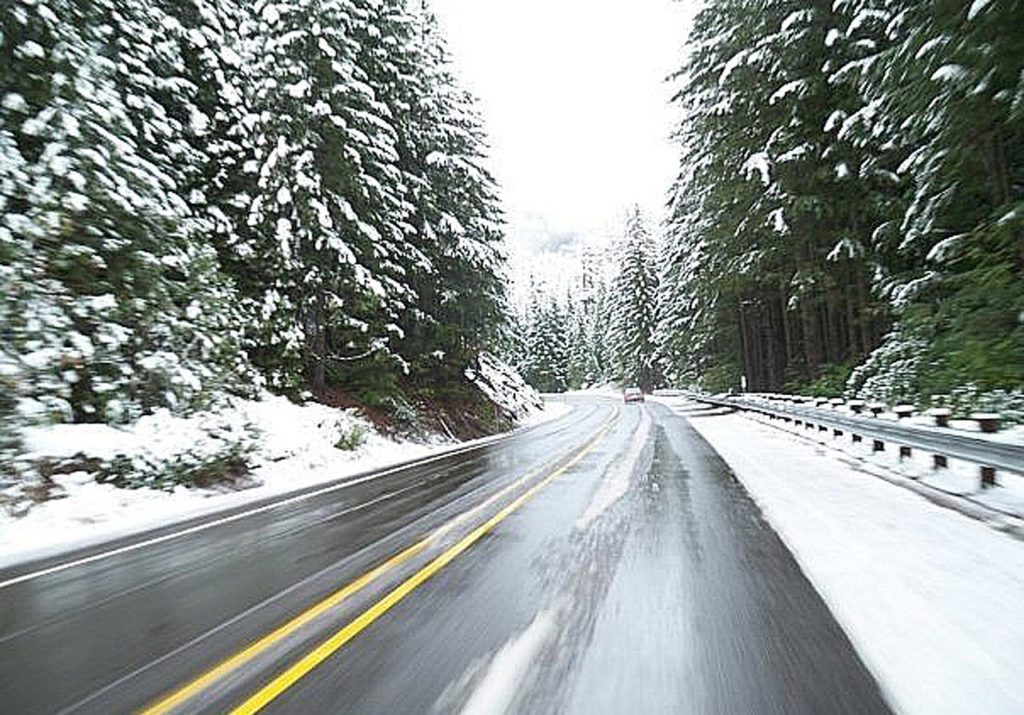
No doubt about it, the severe winter weather in Sault Ste. Marie and Canada can sometimes toss a wrench in your travel plans. To get to your destination and head back safely, remember these critical winter travel tips for your next winter tour:
Fly nonstop if possible
Although it’s often more expensive to fly nonstop, it creates a sense of winter travel. If you reach halfway to your destination and winter weather slows your connecting flight, you could spend the night on a cold, stiff bench inside the airport or hotel. Press the “Show only nonstop flights” button to locate flights when searching nearby airports to discover alternative nonstop flights.
Inform your flight attendant if you have a tight connection or require a connecting flight. They may be able to assist you to your connecting flight more promptly.
Book morning flights
Again, try booking a morning flight in the winter because if your flight gets delayed or canceled, the airline will most likely arrange you on a flight later that day if there are seats available. If they don’t, you can still fly out from a different airport or with another airline later that day. Worst case scenario, if all flights are canceled, you still have the alternative to drive to your destination.
Prepare for changing planes outdoors.
Don’t put your coat inside your luggage or car if you have a connecting flight, leading to a warmer climate. You may have to stroll outside to change planes, particularly at more rural airports.
Leave early
Whether you’re flying or driving, it is better to leave early. During the winter months, weather conditions can immensely affect your travel, causing delays. When you leave early, you won’t have to worry about whether you’ll arrive in time, no matter what the weather is.
Stay updated online
Most airlines and airports publicize their flight delays or cancellations on their social media, so make sure you track their accounts on Facebook and Twitter. If you’re not the social media type of person, you should periodically scan your airline’s website or your email for vital updates about your flights.
Bring a winter emergency kit along with you.
Before the first snowfall, fill a bag full of winter supplies in your trunk and glove box. Your emergency kit should contain a warm pair of gloves or mittens, an additional coat, a warm pair of pants, a blanket, a flashlight, additional batteries, a tool to clean your windshield off, a water bottle, and an energy bar or two. A pack of rock salt or some clay cat litter can also provide you traction if you get stuck in the snow.
Check your car’s unique features.
If you just bought a new car but have never driven in the snow before, or if you’re driving a rental car, acquaint yourself with the placement of the hazard lights, defroster, and windshield wiper buttons. Know how to turn down into a lower gear. Read the owner’s manual to understand if your car has special features, such as anti-lock brakes or electronic stability control. If you can, locate an empty parking lot during your first snow, so you can familiarize yourself with how the car handles in these conditions.
Winterize your car
Has your car been inspected for its winter readiness well before the first winter storm? Make sure you also maintain your fluids topped up after the weather turns cold. Even if your car is suitable in the snow, always consider winter tires. Winter tires can provide your car the advantage in deep snow or ice. Inspect both the tread and the air pressure in your tires frequently during the winter. Cold temperatures can make the tire pressure drop.
Drive slowly, see, and be seen
Before you pull out of the driveway, scrub all the snow and ice off your headlights and taillights off your windows. Make sure your defroster has warmed your windows before leaving so you won’t have cloudy windows on the road. Heavy rain, snow, and ice drive slower than the speed limit.
Drive about half the normal speed or slower and leave plenty of room ahead. Don’t tailgate—even in severe urban traffic or in traffic jams. Don’t use cruise control. It might rev at the worst time, like on a hill or a frozen bridge.
Be careful with danger spots.
Look well ahead of you as you steer. Slow down if you notice snowdrifts, icy areas, or a bridge ahead. Because water evaporates and recondenses, the water in a stream or other body of water frequently forces the road surface to freeze. Don’t assume any chances.
Taking these safeguards before and during winter travel will equip you for almost all harsh weather situations can throw at you during your trip.
Bonus Travel Tips
For one reason, the slowest winter travel dates above may not function for you to travel by air. There’s no need to stress. Here are a few more quick pieces of advice to help you plan your holiday.
Travel on Tuesdays
Year-round, Tuesday is normally the slowest day of the week for air travel. When you can, book your travel mid-week instead of on weekends.
Fly on National Holidays
Holidays at airports are not generally as lively as the dates around them. Suppose you can schedule festivities on the day before or after a national holiday and travel on holiday itself (Hanukkah, Kwanzaa, etc.). In that case, you’re likely to acquire a better experience at the airport. It goes for the most significant holidays.
Don’t Check a Bag
If you must fly on a bustling winter travel date, pack light. You’ll save yourself the nuisance of lost baggage if you only bring a carry-on. If gifts are part of your holiday custom, buy small items like jewelry, and leave them unwrapped until you arrive. Better yet, try purchasing them at your destination rather than at home.
Final Thoughts
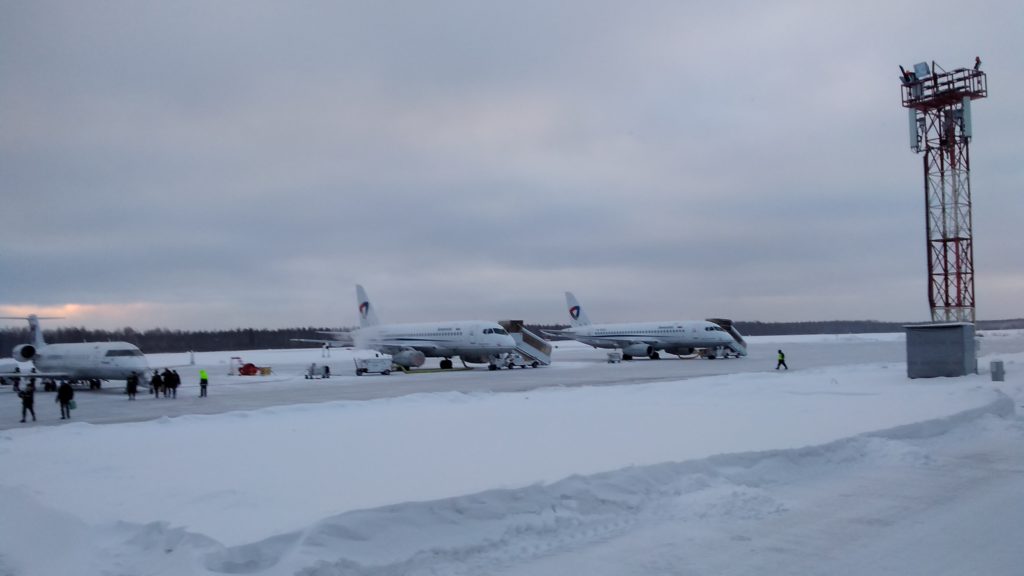
To avoid unneeded delays, the TSA advises passengers to be aware of the current COVID-19 health and safety protocol, including directing all travelers to wear masks at TSA checkpoints.
Among the TSA’s other holiday advice, travelers are urged to do the following:
- Pack smart by refraining from packing restricted items or overstuffing your luggage.
- Learn how to travel with holiday food and drink.
- Pack unwrapped gifts in gift bags to avert the risk of TSA officers having to unwrap them during screening.
- Download the MyTSA app for safety information and live aid.
Winter is when we think of traveling to see and hug our loved ones. Everyone has their time off from school and work for the holidays, so it’s the ideal season to gather or get away from the daily grind.
References:
- TSA expects these four days to be the busiest travel dates of the holiday season: https://fox8.com/news/tsa-expects-these-4-days-to-be-the-busiest-travel-dates-of-the-holiday-season/
- Guide to winter travel- useful safety tips, dos, and don’ts: https://drprem.com/travel/best-winter-travel-safety-tips-for-travelers/
- 10 Essential Winter Travel Tips Whether You Fly or Drive: https://quattrossm.com/winter-travel-tips/
- 7 Air Travel Mistakes to Avoid When You’re Flying in Winter: https://www.onetravel.com/going-places/air-travel-winter-flying-mistakes/
- 8 Travel Tips for Dealing with Winter Flight Delays and Cancellations: https://www.studentuniverse.com/blog/travel/holiday-travel/8-travel-tips-for-winter-flight-delays-and-cancellations
- Winter holiday travel rush likely to approach pre-pandemic levels: https://www.goodmorningamerica.com/travel/story/winter-holiday-travel-rush-approach-pre-pandemic-levels-81741133
- Good to Know: Best and Worst Days for Holiday Travel: https://www.smartertravel.com/good-know-best-worst-days-holiday-travel/
- What are the Busiest Dates for Winter Travel?: https://www.theparkingspot.com/blog/busiest-days-for-winter-travel
- What should I do if my flight has been canceled or delayed?: https://edition.cnn.com/travel/article/what-to-do-flight-canceled-delayed/index.html
Look for a place to stay on Agoda.
Sign-up now!
Start your digital nomad journey today!
